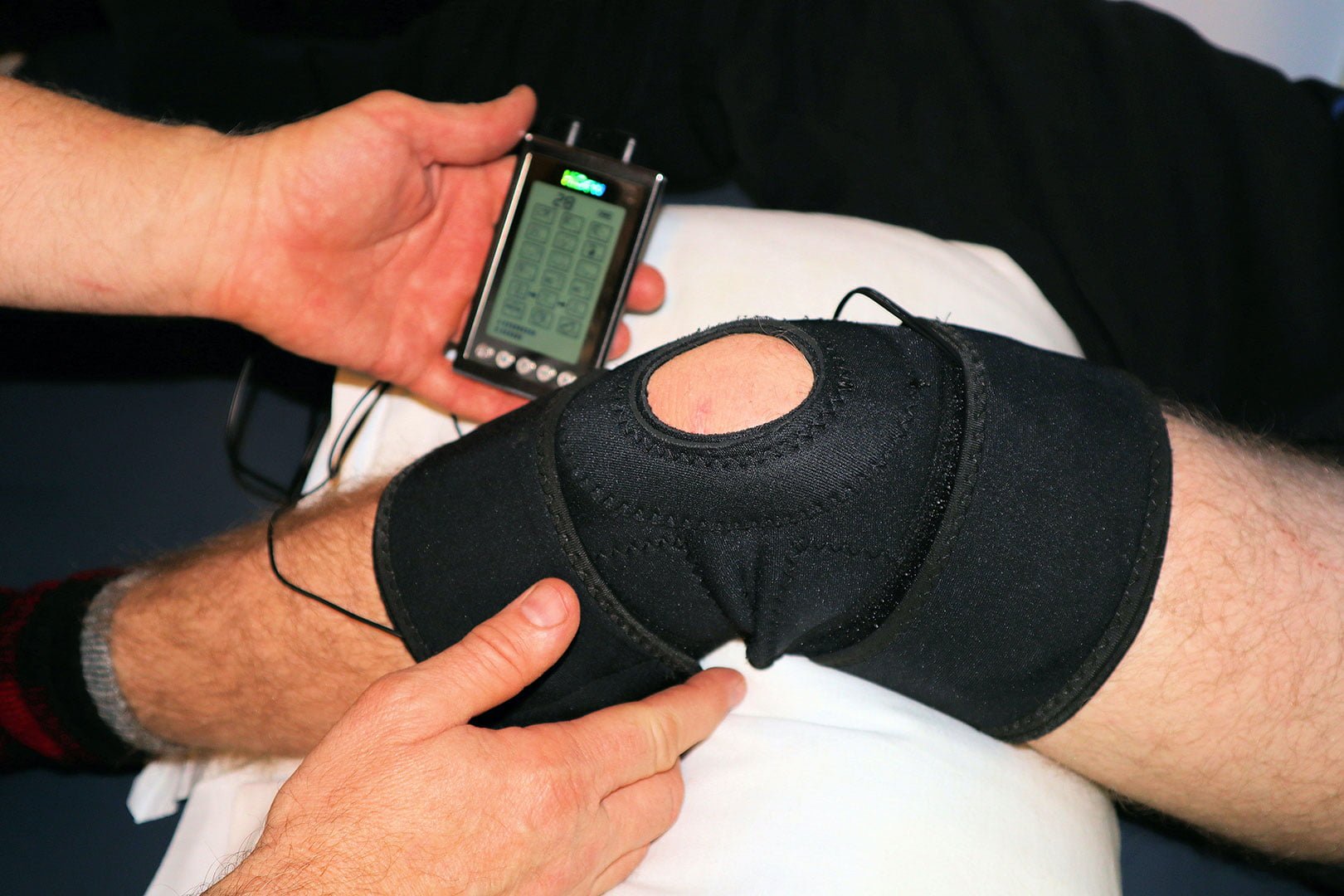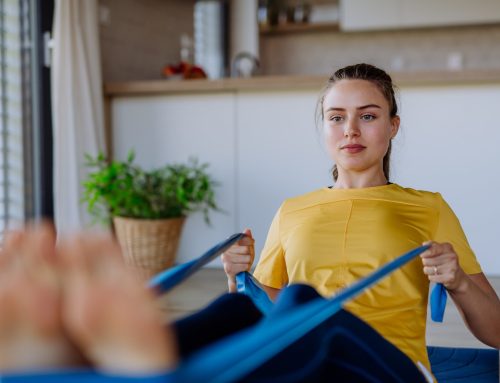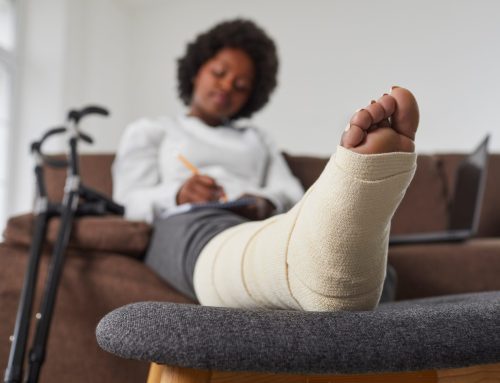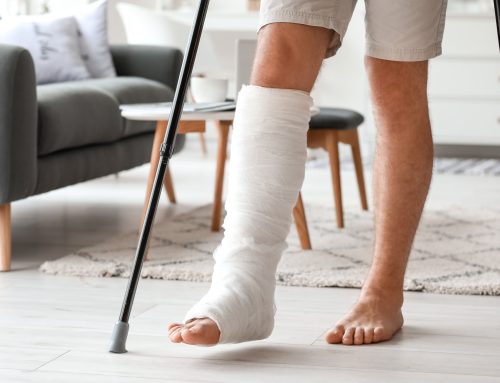How to Keep Your Knees Healthy for a Fun, Active Summer
When Canada is graced with warm, sunny weather, we’re all anxious to get outdoors. Getting active outside has been proven to boost both physical health and mental health. But as we age and keep moving, our knees can feel the strain.

Our knees support our body weight and frame as we walk through the world, and they can get creaky and more painful with use and age. Osteoarthritis is a threat for everyone, but there are ways to strengthen your knees, including exercises and stretches.
Effects of osteoarthritis begin sooner than you think
As we live longer, arthritis is more a part of daily life. And it’s not just for the elderly — nearly one third of people with osteoarthritis are diagnosed with the disease before the age of 45. Children that injure a knee playing sports like soccer or hockey may develop osteoarthritis ten or fifteen years later as a result.
Cartilage is a smooth covering that lets the ends of our bones glide over each other when we move. Osteoarthritis, the most common type of arthritis, leads to the breakdown of cartilage in the body’s joints and the bones underlying them. This forces the bones to rub against each other, leading to pain, stiffness, and swelling.
Tips for strengthening knee health
In order to keep your knees strong and healthy for a fun, active summer we’ve put together the tips below. Make sure that you discuss any new exercise programs with your primary care physician or physiotherapist before you begin.
Keep those knees moving
When one or both of your knees are hurting, it may be tempting to stop using them as much. While rest is important, becoming less active because of a sore knee will make it worse in the long run. People that are unable to move for a period of time, usually due to a traumatic incident, injury, illness, or major surgery, start to lose cartilage in the knees. Make sure to keep your muscles strong by staying active and doing workouts within your fitness and ability range. This also helps with maintaining a healthy weight.
Take a walk or go for a swim — low impact activities are perfect
Exercise reduces joint pain and stiffness and maintains proper joint function. Low-impact activities put less pressure on our bones and joints. Exercises like bike riding, rowing, or swimming mean your body is supported by a bike or water, so there is less stress on the body. Mix up your activities to ensure you’re doing both aerobic workouts that strengthen the cardiovascular system and strength training that builds muscle and joint health.
To better protect the knees, avoid doing exercises like running downhill. Even more gentle activities like yoga can include kneeling and deep bending exercises that can put strain on damaged knees.
Be careful when doing high impact activities
Warm-up before you do any more intense exercises, like playing basketball or tennis. Stretch your leg and knee muscles. Marching in place can also get the knees warmed up. Start slow with doing any new activity, gradually increasing the frequency and intensity.
Good technique goes a long way in protecting our joints and bones. Use a coach, trainer, or physical therapist to show you the best form for everything from lifting boxes and walking up stairs, to perfecting your golf swing or slapshot or lifting weights.
Maintain a healthy, nutritious diet
When trying to keep all body parts in tip-top shape, it’s important to have a nutritious diet that includes lots of proteins and vegetables. Make sure to consume foods and drinks high in calcium, like milk, cheese, and dark green vegetables, and vitamin D, like cereals, fatty fish, and eggs. These essential nutrients strengthen bone and joint functions. Ensure you’re maintaining a healthy weight, as people that are overweight or obese may be more at risk for developing osteoarthritis.
Do knee strengthening exercises
There are many easy-to-do exercises that work to strengthen the knee muscles and can be performed anywhere. These include:
- Lunges: putting one foot in front of the other, slowly lower into a lunge, without letting your knees extend beyond your toes. Or lunge while walking.
- Straight leg raises: lie on the floor on your back, bend one knee, putting it flat to the floor. Keep the other leg straight and raise it to the height of the other knee.
- Wall squats: stand with your back against the wall and your feet shoulder-width apart. Slowly bend your knees and hold the squat for five to ten seconds.
- Calf raises: standing with your feet shoulder-width apart, slowly lift both your heels off the ground until you’re standing on the balls on your feet. Slowly lower again to the starting position. Use a wall or the back of a chair for added support.
The UK National Health Service has a program of knee exercises for runners with photos, many of which can be used for everyone, which can be found on their website.
Stretch it out
Stretching the muscles and connective tissues around your sore knee will help decrease pain and stiffness, and increase motion. The iliotibial band is a muscle that runs down the outside of the thigh and can become tight and lead to sore knees. Stretches for the muscles and joints around your knees include:
- Quadriceps stretches: standing with knees shoulder-width apart, bend up knee and bring your foot towards your bottom. Gently grab the ankle and pull it towards the glutes, ensuring there is no pain. Hold for thirty seconds and repeat on the other side.
- Hamstring stretch: lay on your back and raise one leg to the ceiling. Place your hands below the knee and gently pull it towards your chest until you feel the stretch.
How do you protect your knees?
Have you ever had issues with your knees and what did you find worked for you? What exercises do you like to do to strengthen your knees? We’d love to hear your thoughts, concerns, and questions in the comment section below.






Leave A Comment